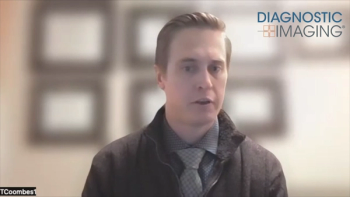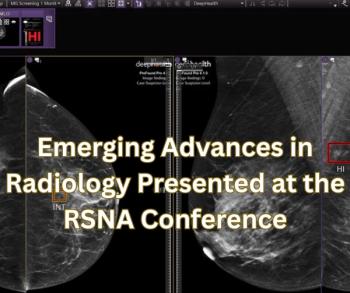
Add an Attending to the ED Overnight, Decimate Imaging Recalls
Research shows incorporating an attending radiologist into after-hours call can reduce the recall rate by nearly 90 percent.
Put an attending radiologist in place overnight in the emergency department (ED), and reduce the number of imaging exam recalls by approximately 90 percent. That is the main finding from recently published research in
Published on Jan. 11, this study, led by researchers from the University of Toronto, looked at imaging recall rates both prior to and after installing a veteran radiologist on the night shift. The ED recall rate for the two years before the personnel change reached 61 incidents. But, once the radiologist was available for after-hour, in-house reads, that number dropped to seven – an 89-percent plummet.
“While absolute numbers are low, there is a significant decrease in patients returning to the ED for imaging-related issues after introducing overnight attending coverage,” wrote the team led by Rawan Abu Mughli, M.D., from Sunnybrook Health Sciences Center’s Division of Emergency & Trauma Radiology.
Related Content:
As a result of their intervention, facilities could see a rise in patient comfort and safety, as well as enhanced workflow in the ED alongside a reduction in costs. It is anticipated these improvements will grow over time, the team said.
To test whether adding a radiologist to the ED overnight would make a difference, Mughli’s team launched an in-house coverage intervention in September 2017 in Sunnybrook, Canada’s busiest Level 1 trauma center. According to the study design, radiology residents were responsible for creating preliminary reports within two hours of the exam, and they worked with referring physicians to answer questions, discuss findings, and submit any study requests. However, the attending radiologist was responsible for the final reports of all acute imaging studies occurring in the ED overnight, as well as for inpatients.
During the study period, the team saw interesting results. While the overnight imaging utilization maintained a steady upward trajectory, rising from 13,883 in 2016 to 14,463 in 2017 to 15,112 in 2018, the number of ED recalls did not completely follow suit. The numbers went from 54 in 2016 to 61 in 2017 to 7 in 2018.
The benefit was not just that the number of recalls dramatically fell off, Mughli’s team said. The ED physicians also reported a higher level of satisfaction with reports produced by the attending radiologists, particularly in incidents involving surgery. In addition, the team pointed to improved ED workflow, improved quality of care, and patient management optimization as some of the benefits from the intervention.
Even though some in the industry have expressed doubts about the need to incorporate an attending radiologist into overnight ED call because the recall rates are already relatively low, Mughli’s team reiterated that it is important to reduce the number of recalls as much as possible to control unnecessary utilization.
“Overnight final reporting significantly decreases ED recalls for patients receiving diagnostic imaging overnight,” they said. “While numbers are low even prior to rollout, the number should be minimized whenever possible to diminish patient anxiety and discomfort, reduced ED overcrowding and expedite definitive management.”
For more coverage based on industry expert insights and research, subscribe to the Diagnostic Imaging e-Newsletter
Newsletter
Stay at the forefront of radiology with the Diagnostic Imaging newsletter, delivering the latest news, clinical insights, and imaging advancements for today’s radiologists.




























